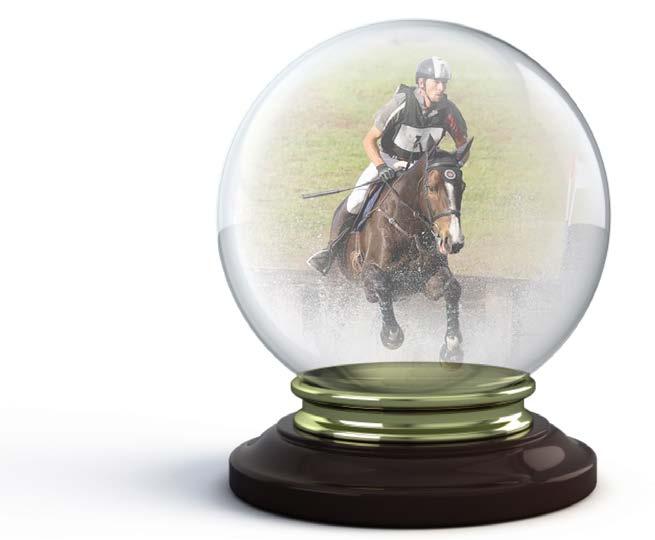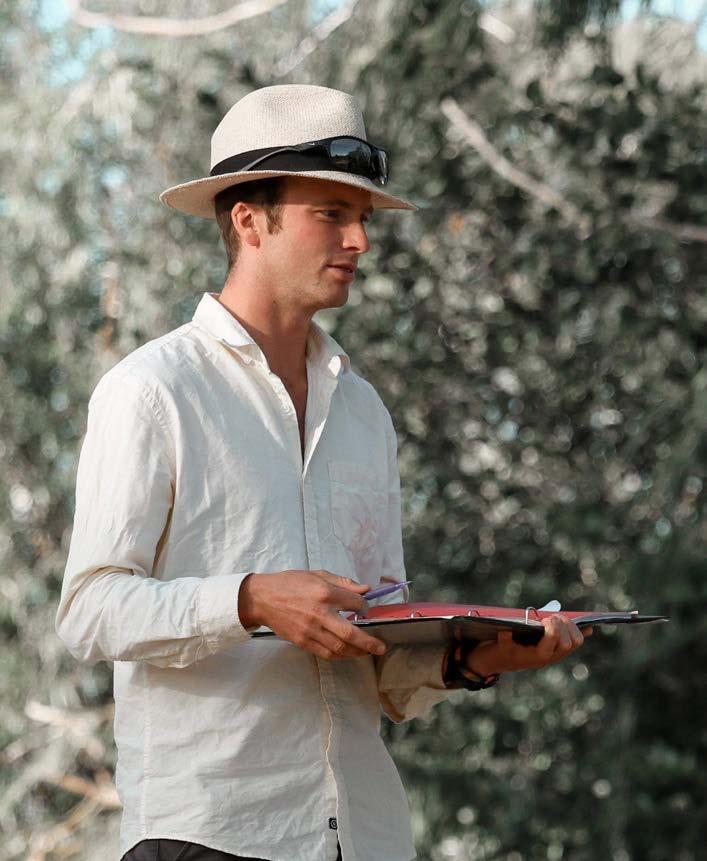
4 minute read
CHARLIE BRISTER
BRISTER’S BRIEF
Crystal ball judging is always hard
CHARLIE BRISTER was in Toowoomba recently judging the young horse eventing classes. Not an easy task.
Judging is a lot harder than it looks. And judging young horse eventing classes is even harder. Not only are you assessing horses perform on the day, you have to forecast their possible future competing at the top Australian and international events.
It’s a skill that’s partly derived from experience, research, technical knowledge and an ability to look into a crystal ball. For the past twenty years in Europe young horse eventing championships have identified world cup and Olympic talent, and the program is gathering momentum in Australia.
In mid-April Toowoomba held their Armstrong Ford one-day event and young event horse of the year competition. It was the second time I’ve judged the Young Event Horse division and this year there was perfect weather, great people and quality horses. The committee created a fantastic event and attracted terrific future talent. Toowoomba run the class slightly differently to most other young horse competitions in Australia where there is usually set a basic dressage workout before a unique jumping phase. The jumping consists of a mix of showjumping and cross-country jumps in the showjumping arena.
In Toowoomba the young horses enter the regular competitions for 95, 1* or 2* classes and elect to be evaluated as part of the young horse division. Following the dressage and showjumping, the judge conducts a conformation and trot up assessment of each young horse. Then as the main competition commences there is a careful review of each young horse as they compete across the normal three phases of eventing: dressage, cross country and showjumping.
What really sets this competition apart is an additional ridden assessment. A shortlist of seven young horses is selected from competitors in the normal competition phases. Then the judge actually spends five to ten minutes riding each horse and seeing how they feel in the saddle over a couple of jumps.
This ensures that little visual mistakes do not detract from the overall impression and result for a horse. It also makes the judge a lot more stressed and it gives the crowd a chance to judge the riding of the judge! (No pressure there.)
One thing that was very clear is that faults or issues showing in the dressage phase quite often carried through to the other disciplines.
Surprise, surprise, good dressage helps your jumping, and definitely improves the rideability of the young horse.
A good mix of breeds was represented from Off The track
Thoroughbreds to purpose bred Holsteiners to paints and Connemaras. Look at

any 5* event and you will see various bloodlines represented. As a judge you definitely can’t just pick the winner on paper. It’s what’s on the inside that’s most important and how that translates to skill and attitude at a competition.
At some venues it would be hard to watch the cross-country without a video feed of several fences. Luckily, Toowoomba has a great layout with the cross country running across the side of the hill at the back of the showgrounds. This allows the judge to see a large proportion of the course and watch how the horses galloped early on in the cross country and then also at the end of the course.
The ridden assessment has to be one of the toughest things for any judge. Hopping onto seven horses you’ve never ridden before in the main arena in front of a crowd in the space of about 90 minutes is not conducive to relaxation. Not only do you have to test the horse’s ability, you want to make sure that you don’t push too hard and give the horse a bad experience. Maybe picking three mares for the final in Toowoomba this year was not the best decision, since my choices required a high level of equitation diplomacy! In saying that I found that one of the mares was the best-educated, easiest to ride and had a superb scopey jump.
A four-year-old would not usually be the overall winner if it was picked on paper before the class. Luckily, for Mercadies Mitchell her four-year-old thoroughbred was exceptional. Calypso Charm (a bay Thoroughbred Gelding by Storm of Indya out of a Rhythm mare) has good movement, is very calm and trainable. He also has that lovely thoroughbred gallop, although too uphill to have been successful on the racetrack.
Matt Gaske was a very close second on Bellhaven Cumbria (a six-year-old bay Holsteiner mare by Bellhaven Coraldo out of a Cassini II mare). He had this mare very well trained and she will be one to watch. Jo Williams is on the committee and also managed to sneak into 3rd on Jurara Keanu (a six-yearold brown Warmblood gelding by Gymnastik Star out of the mare Pride of Kellina).
It would be excellent to see more states adopting this model of young horse competition. Assessing not only the basic gaits but how they handle the full competition environment is closer to the model seen in Le Lion which has seen the likes of La Biosthetique Sam and Fischer Rocana transition from Young horse Champion to Olympic and World Champion.
In the meantime, my advice is to make sure you can ride as many different types of horses as possible in case you get asked to Judge at Toowoomba!

Charlie Brister taking notes at Toowoomba.










